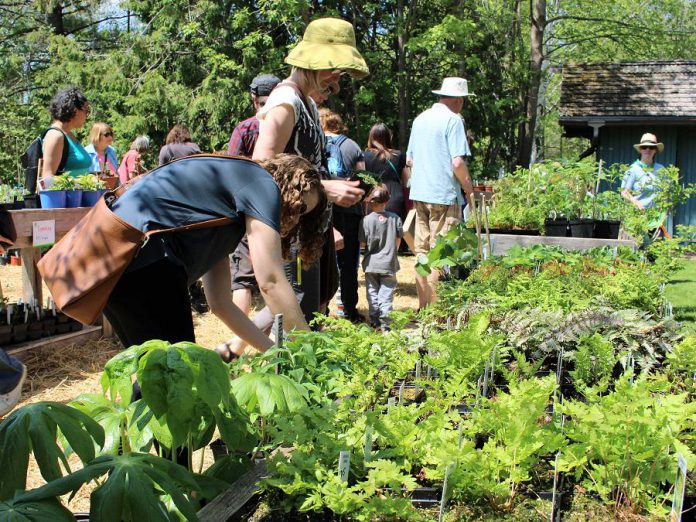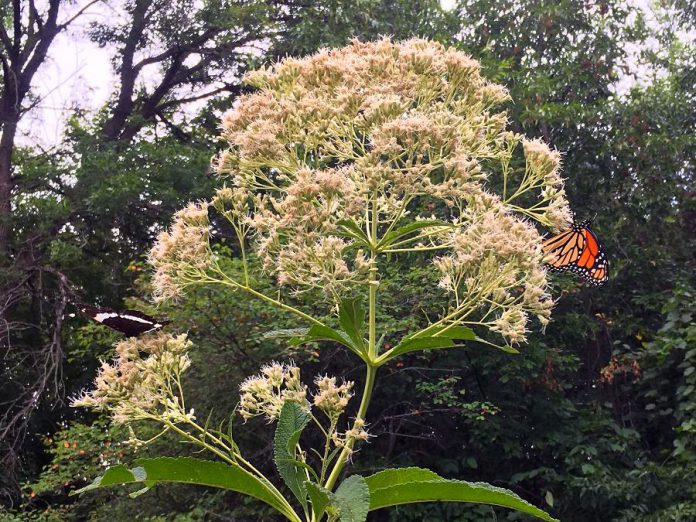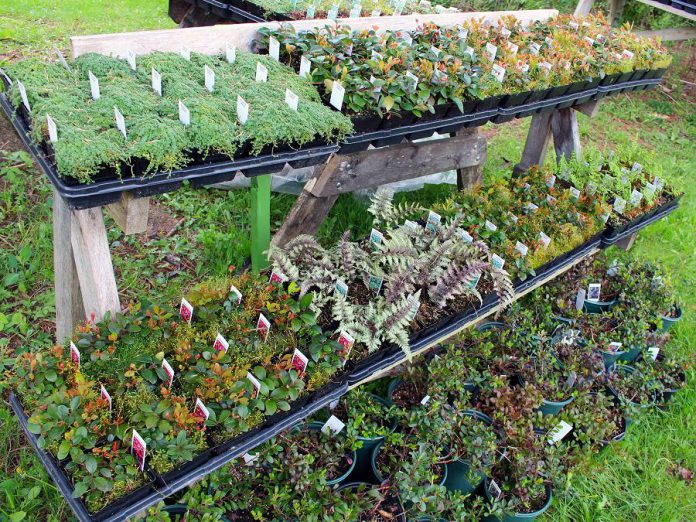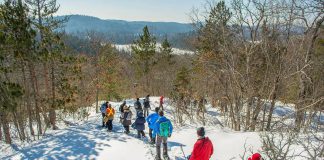
Gardening season is here! Many people are finalizing their garden plans, some are excited for new additions to current beds, and some are starting fresh with a new plot for the season.
All this is just in time for the GreenUP Ecology Park Annual Spring Plant Sale on Saturday, May 18th from 10 a.m. to 4 p.m. at 1899 Ashburnham Drive in Peterborough.
Whether you’re a seasoned gardener or commencing your very first gardening season, there’s always something to learn.
So this year, before you reach for the same old annuals or perhaps the first unique flower to catch your eye, consider how your garden can help native species. You can expand the number of pollinators in your yard and increase the biodiversity in your neighbourhood without sacrificing visual appeal or the approval of your neighbours.

Why should we pause to make these considerations? Well, just this past week, on May 6th, the United Nations released a report stating that nature is declining globally at rates unprecedented in human history.
The report states that “Species and ecosystem diversity and the contributions we derive from nature are declining fast, but that we still have the means to ensure a sustainable future for the planet.”
You can start right now within your own garden.
With all of the options lining the aisles of local greenhouses, how can you select the plants that are best for biodiversity? How will you know they are native? Which ones are safe for local pollinators?
It seems like there’s so much to know! But fear not, we are here to help you ease into the season with the knowledge and the resources you need to get started.

Let’s start with understanding the importance of including native plants.
Native plants have adapted to our soils and climate and they provide homes and shelter for many other types of life, which will also help to increase biodiversity in your yard. When you include native plants, you foster a healthy balanced ecosystem which is also more resistant to damage from pests and diseases.
Ecology Park carries many of these varieties and specializes in carrying native and locally adapted species.
“Plants that have evolved here in Ontario do not disrupt the local ecology in the way that some exotic plants from other continents can,” explains GreenUP Ecology Park manager Vern Bastable. “When you plant a wide variety of native species in your yard, you help create a natural balance and, at the same time, you create opportunities for attracting urban wildlife species such as songbirds, butterflies, native bees, and frogs.”
If you love colour in your garden (and who doesn’t?), then there are many native wildflowers that you’ll want to acquaint yourself with.
“Planting wildflowers into your yard and bringing them back into cities, will restore health back to our urban outdoor spaces,” says GreenUP’s downtown vibrancy coordinator Dawn Pond. “Many wild plants are beautiful additions to our yards, and they are important sources of food and shelter for pollinators and birds who depend on these sources for their survival.”
It is also important to understand the conditions in your yard before you choose species to plant. Some will require shade while others will need sun, and some plants can tolerate dry conditions while others will prefer to have “wet feet”.

There are many wildflower options that are fantastic choices for the Peterborough area and there are many options for sun, shade, and soggy conditions.
Some of the most colourful wildflower blooms will require at least six hours of sun daily: wild bergamot, beebalm, milkweed, black-eyed Susan, and purple coneflower are among the most popular choices.
If you’re surrounded by shade, consider consider bloodroot, Jack-in-the-pulpit, Jacob’s ladder, or wild columbine — all of which are woodland wildflowers that bloom in early spring and then provide lovely decorative foliage for the remainder of the season.
Got a particularly wet area in your yard? Many species typically found in wetlands may be great wildflower choices and will also provide great colour. Marsh marigold, cardinal flower, and joe-pye weed are favourites for soggy spots, and they too can tolerate the drier conditions that they will likely encounter later during our hot Peterborough summers.
“If you’re out circulating between the garden shops, be careful which plants you purchase,” says GreenUP Sustainable Urban Neighbourhoods program co-ordinator Jenn McCallum. “Unfortunately, invasive plants such as periwinkle, English ivy, and goutweed can still be purchased in garden centres and they can really cause problems in our local landscapes by choking out important native species, impacting water quality, disrupting natural cycles, and taking over your yard.”
There are plenty of native alternatives to some of these unwanted invasives. Wild strawberry, wild ginger, and wild geranium will add interest and colour to your flower beds. These varieties may be harder to come by at garden centres, but are available at GreenUP Ecology Park while supplies last.

For a full list of native alternatives to some of the troublesome invasive plants, be sure to check out a copy of the “Grow Me Instead” guide available at ontarioinvasiteplants.ca.
To naturalize your yard, there are some other steps you can take. Plant flowers with a variety of bloom times, which will please you with colour throughout the seasons. Birds, butterflies and, bees will also be supplied with an ongoing source of food too.
Some other environment-friendly practices are to arrange your plants into groups or clumps, minimize the amount of lawn you have, amend your soil with nutrient rich compost, apply mulch to keep weeds down and moisture in, avoid any pesticides, and water with rainwater from a rain barrel.
Welcoming native plants back into our yards is also a way of showing our pride in the Peterborough area — a celebration of its unique beauty. For more information, native plant lists, bloom times, and great green gardening ideas, visit greenup.on.ca or come on out to the Ecology Park Plant Sale on Saturday.
The Peterborough Master Gardeners will be on site during the Ecology Park Plant Sale to answer all of your gardening questions and help you to select just the right species for your yard. They will also be attending the Ecology Park Garden Market on a regular basis to consult with you about any gardening questions that you may have throughout the season.


























